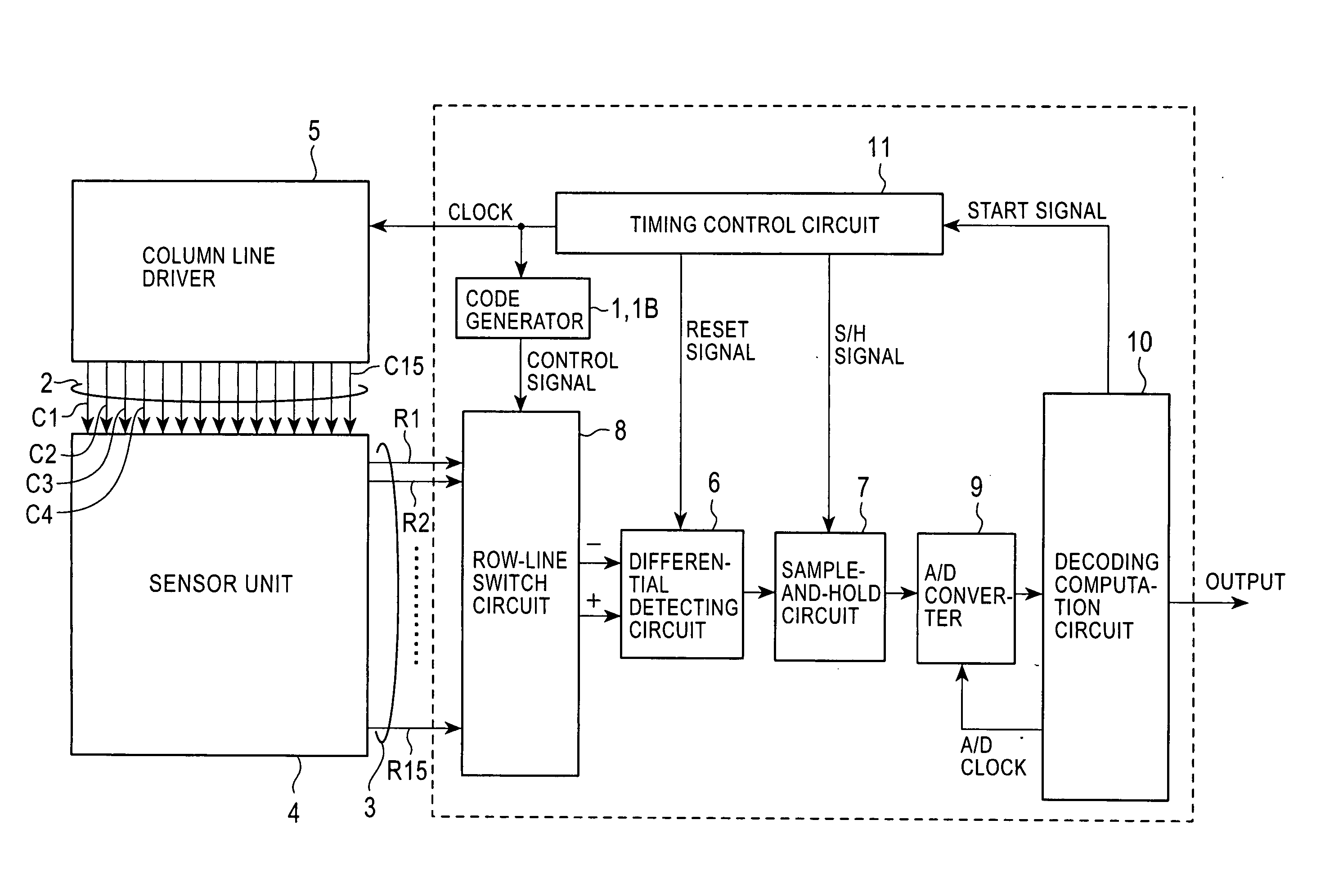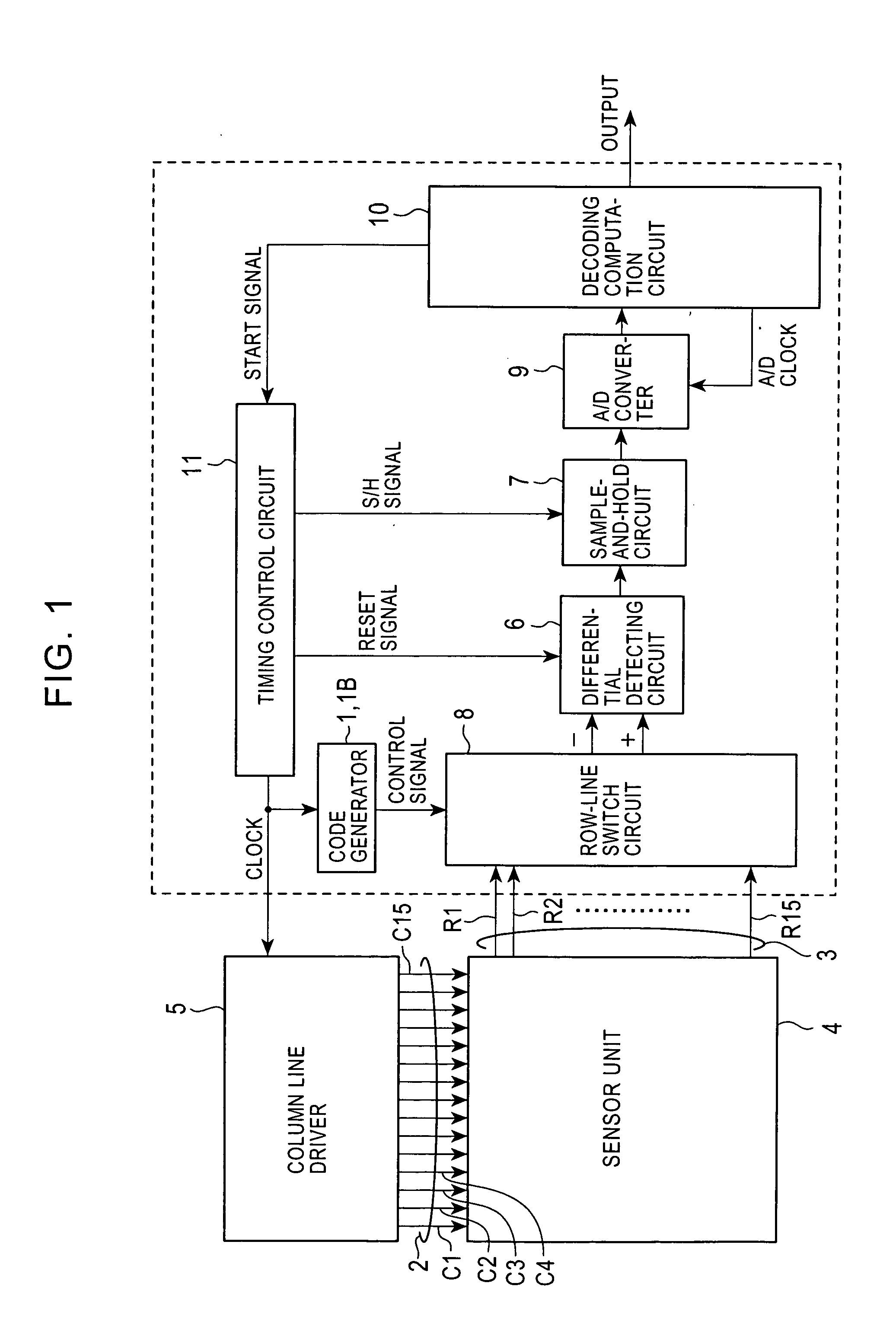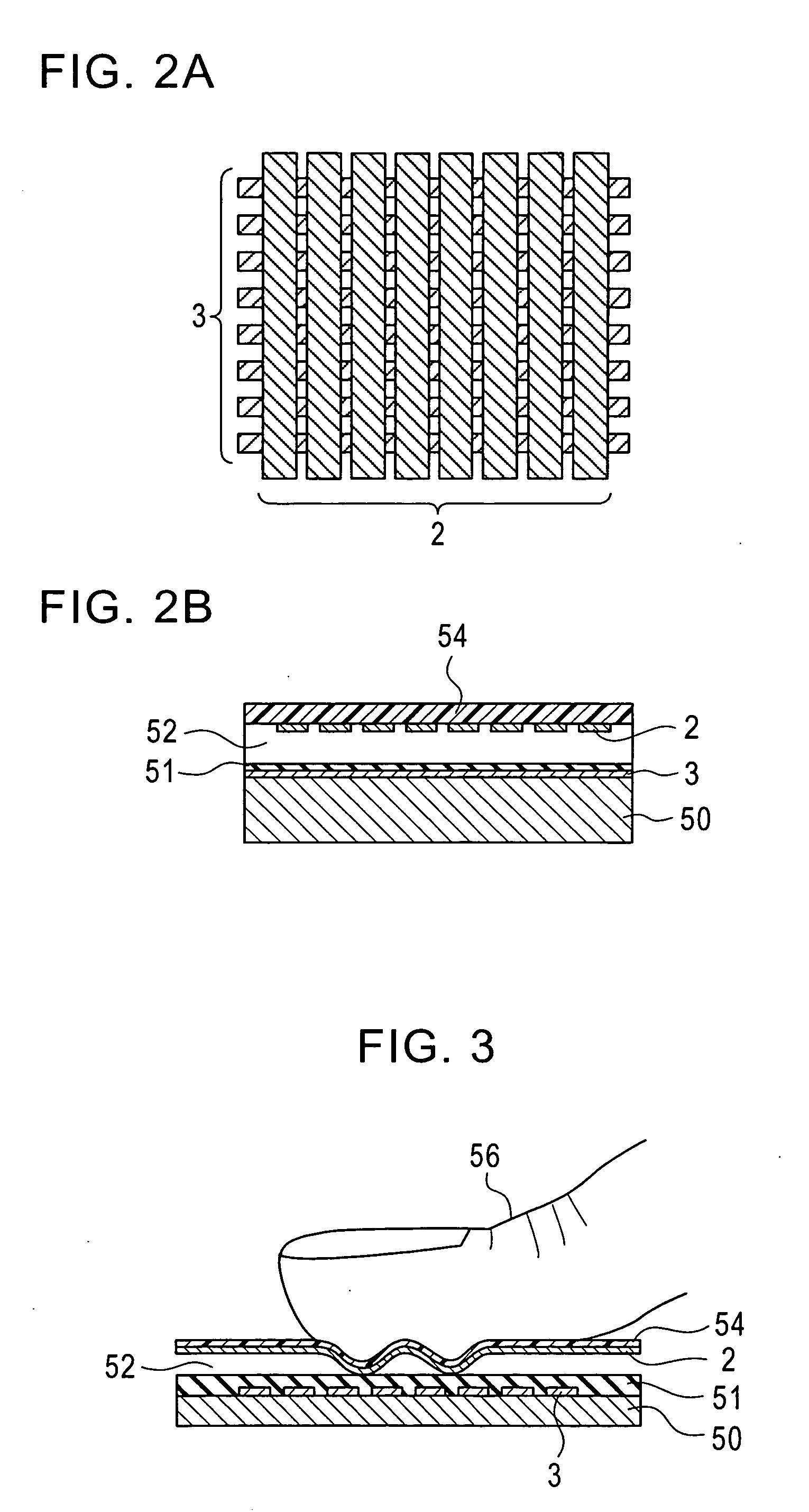Capacitance detecting circuit and method, and fingerprint sensor using the same
- Summary
- Abstract
- Description
- Claims
- Application Information
AI Technical Summary
Benefits of technology
Problems solved by technology
Method used
Image
Examples
first embodiment
[0059] A capacitor detecting circuit constructed in accordance with a first embodiment of the present invention is discussed below with reference to FIG. 1.
[0060] A code generator 1 generates pseudorandom noise (PN) code used for generating a control signal for selecting row lines (for example, 15 row lines) forming a row line set 3 of a sensor unit 4. As the PN code, M-series PN code having high autocorrelation is used.
[0061] The code generator 1 also outputs a control signal corresponding to the order of a bit string of the PN code to a row-line switch circuit 8 that switches the row lines of the row line set 3 so that the row line set 3 is divided into two row line groups based on the PN code.
[0062] The row-line switch circuit 8 assigns, based on the control signal, the row lines to a positive-level row line group when the bit data of the bit string of the PN code is 1 and to be a negative-level row line group when the bit data is 0. In other words, the row-line switch circuit...
second embodiment
[0150] A capacitance detecting circuit constructed in accordance with a second embodiment of the present invention is described below with reference to FIG. 1. Elements similar to those of the first embodiment are designated with like reference numerals, and an explanation thereof is thus omitted.
[0151] The capacitance detecting circuit of the second embodiment differs from that of the first embodiment in that the code generator 1 for generating PN code is substituted with a code generator 1B for generating orthogonal code.
[0152] The code generator 1B generates orthogonal code used for generating a control signal for selecting the row lines of the row line set 3 of the sensor unit 4. As the orthogonal code, orthogonal code having high orthogonality, for example, Walsh code, is used.
[0153] The code generator 1B outputs a control signal indicating the order of the bit string of this orthogonal code to the row-line switch circuit 8 for switching the row lines of the row line set 3 i...
third embodiment
[0197] A capacitance detecting circuit constructed in accordance with a third embodiment of the present invention is described below with reference to FIG. 16. Elements corresponding to those of the first and second embodiments are designated with like reference numerals, and an explanation thereof is thus omitted.
[0198] The third embodiment differs from the first and second embodiments in that the row lines of the row line set 3 are divided into a plurality of row line groups (for example, M row line groups), and multiplexing of the row lines by using PN code or orthogonal code is performed in each row line group. That is, in the third embodiment, the row line groups perform multiplexing of the row lines at the same time.
[0199] In other words, in the first and second embodiments, multiplexing by using the PN code or orthogonal code is performed on the overall row lines, while in the third embodiment, measured voltages are multiplexed by using the PN code or orthogonal code in eac...
PUM
 Login to View More
Login to View More Abstract
Description
Claims
Application Information
 Login to View More
Login to View More - R&D
- Intellectual Property
- Life Sciences
- Materials
- Tech Scout
- Unparalleled Data Quality
- Higher Quality Content
- 60% Fewer Hallucinations
Browse by: Latest US Patents, China's latest patents, Technical Efficacy Thesaurus, Application Domain, Technology Topic, Popular Technical Reports.
© 2025 PatSnap. All rights reserved.Legal|Privacy policy|Modern Slavery Act Transparency Statement|Sitemap|About US| Contact US: help@patsnap.com



